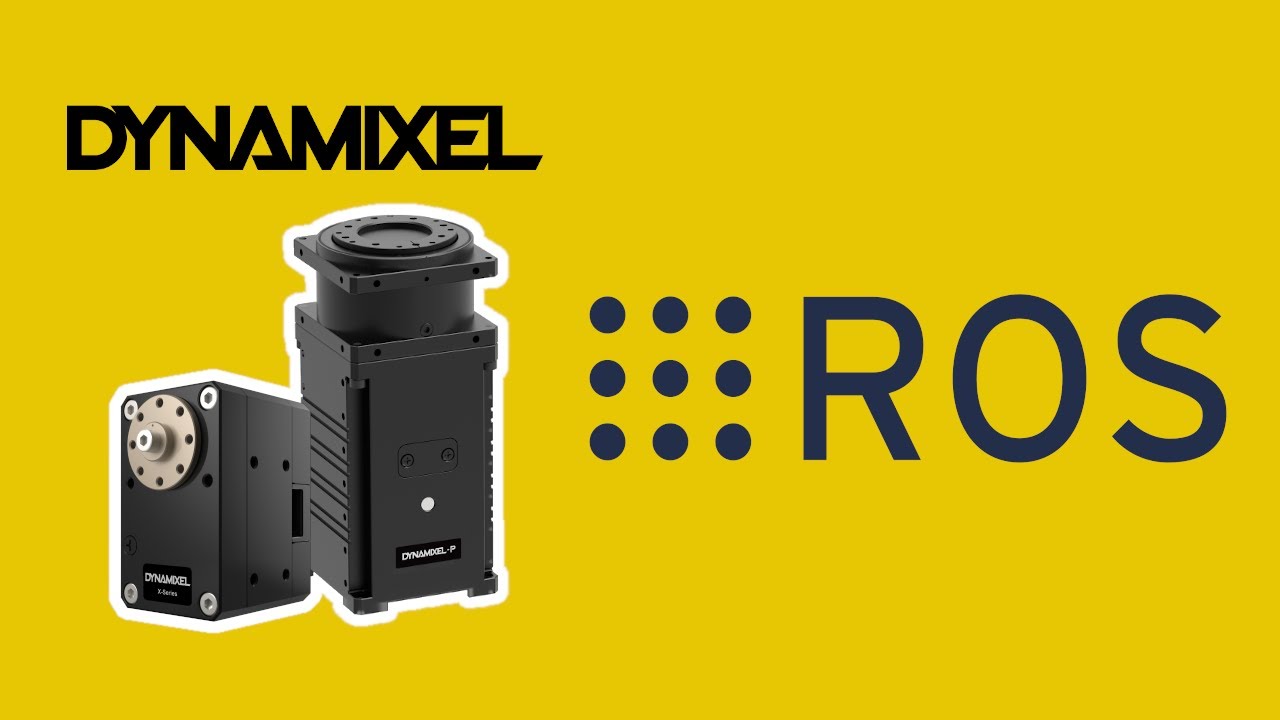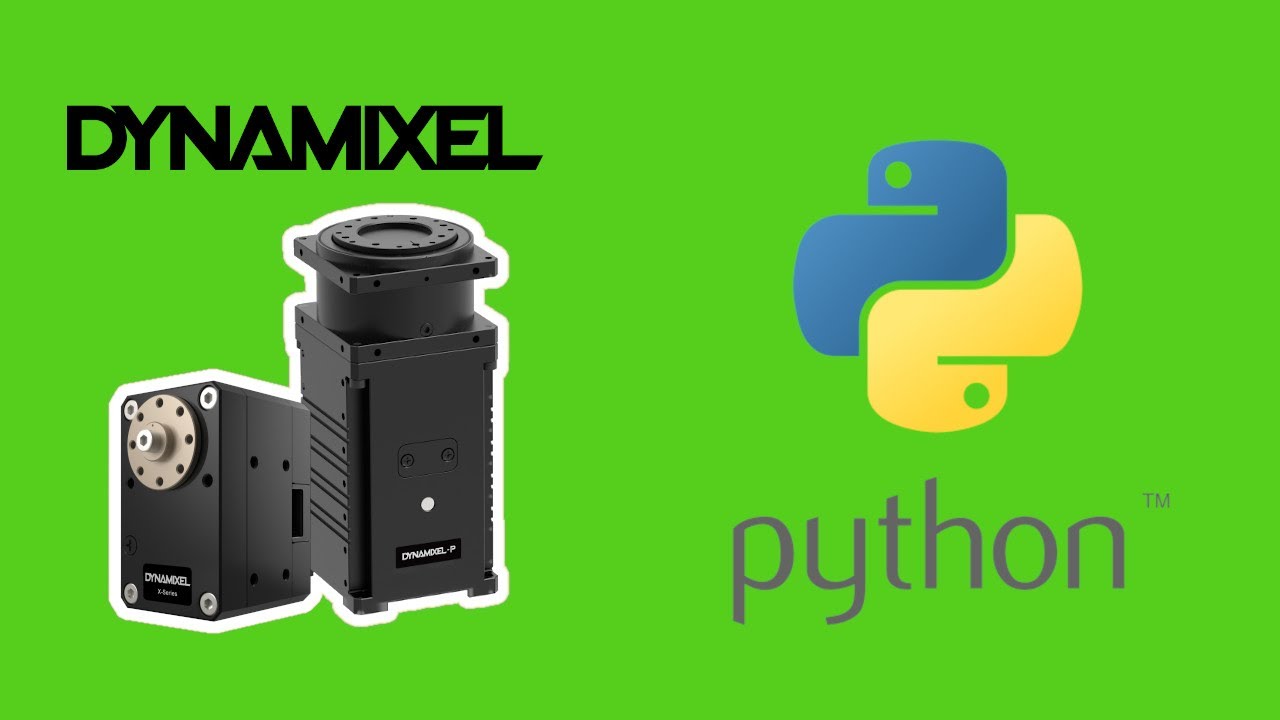Hello everyone.
I hope You are doing well these days.
I’m student and beginner in the work of the Dynamixel motor through ROS and ROS itself.
I am using the U2D2 converter.Ubuntu 18.04. Python 2.7.
Earlier I have made nodes of server and client and controlled the positon of goal position by applying one number. I would like now into one node apply to two goal postions in one time running nodes. For example, before my node rotated from 0 degree to 30 (or any other I applied to) , and now i want to make node of multi turn rotation like from 0 to 30 to 90 degree through the ROS communication between client and server. Here is question: How to do this?
Below here are nodes I have made:
The main node:
import os
import rospy
from std_msgs.msg import String
from motor_control.msg import Motor
from motor_control.srv import Motor2
if os.name == 'nt':
import msvcrt
def getch():
return msvcrt.getch().decode()
else:
import sys, tty, termios
fd = sys.stdin.fileno()
old_settings = termios.tcgetattr(fd)
def getch():
try:
tty.setraw(sys.stdin.fileno())
ch = sys.stdin.read(1)
finally:
termios.tcsetattr(fd, termios.TCSADRAIN, old_settings)
return ch
from dynamixel_sdk import * # Uses Dynamixel SDK library
class DynamixelController(object):
def __init__(self):
print("1")
self.motor_sub = rospy.Subscriber("/motor_topic", Motor, self.motor_callback)
self.test_motor_client(1) #here we can put request order as 1 for the using id=14 and position= 1500; or as 2 is id same and position is 2500. The cases could be found in the server.py node
def motor_callback(self, data):
_id = data.id
_position = data.position
print("_id : {0}, _position : {1}".format(_id, _position))
self.read_write(_id, _position)
def test_motor_client(self, request):
print("3")
rospy.wait_for_service('test_motor_service')
try:
proxy = rospy.ServiceProxy('test_motor_service', Motor2)
response = proxy(request)
print("response is id : {} position : {}".format(response.id, response.position))
self.read_write(response.id, response.position)
except rospy.ServiceException as e:
print("Service call failed: %s"%e)
def read_write(self, _id, _position):
print("Start the node")
print(_position)
_degreeposition = (0.088 * (_position)) #Degree per pulse multiple _position
_degreeposition = int(_degreeposition)
#print(_degreeposition)
print(type(_degreeposition))
# Control table address
ADDR_PRO_TORQUE_ENABLE = 64 # Control table address is different in Dynamixel model
ADDR_PRO_GOAL_POSITION = 116
ADDR_PRO_PRESENT_POSITION = 132
#print(type(ADDR_PRO_GOAL_POSITION))
# Protocol version
PROTOCOL_VERSION = 2.0 # See which protocol version is used in the Dynamixel
# Default setting
DXL_ID = _id # Dynamixel ID : 14
BAUDRATE = 1000000 # Dynamixel default baudrate : 57600
DEVICENAME = '/dev/ttyUSB0' # Check which port is being used on your controller
# ex) Windows: "COM1" Linux: "/dev/ttyUSB0" Mac: "/dev/tty.usbserial-*"
TORQUE_ENABLE = 1 # Value for enabling the torque
TORQUE_DISABLE = 0 # Value for disabling the torque
DXL_MINIMUM_POSITION_VALUE = 10 # Dynamixel will rotate between this value
DXL_MAXIMUM_POSITION_VALUE = _position # and this value (note that the Dynamixel would not move when the position value is out of movable range. Check e-manual about the range of the Dynamixel you use.)
DXL_MOVING_STATUS_THRESHOLD = 20 # Dynamixel moving status threshold
index = 0
dxl_goal_position = [DXL_MINIMUM_POSITION_VALUE, DXL_MAXIMUM_POSITION_VALUE] # Goal position
# Initialize PortHandler instance
# Set the port path
# Get methods and members of PortHandlerLinux or PortHandlerWindows
portHandler = PortHandler(DEVICENAME)
# Initialize PacketHandler instance
# Set the protocol version
# Get methods and members of Protocol1PacketHandler or Protocol2PacketHandler
packetHandler = PacketHandler(PROTOCOL_VERSION)
# Open port
if portHandler.openPort():
print("Succeeded to open the port")
else:
print("Failed to open the port")
print("Press any key to terminate...")
getch()
quit()
# Set port baudrate
if portHandler.setBaudRate(BAUDRATE):
print("Succeeded to change the baudrate")
else:
print("Failed to change the baudrate")
print("Press any key to terminate...")
getch()
quit()
# Enable Dynamixel Torque
dxl_comm_result, dxl_error = packetHandler.write1ByteTxRx(portHandler, DXL_ID, ADDR_PRO_TORQUE_ENABLE, TORQUE_ENABLE)
if dxl_comm_result != COMM_SUCCESS:
print("%s" % packetHandler.getTxRxResult(dxl_comm_result))
elif dxl_error != 0:
print("%s" % packetHandler.getRxPacketError(dxl_error))
else:
print("Dynamixel has been successfully connected")
while 1:
print("Press any key to continue! (or press ESC to quit!)")
if getch() == chr(0x1b):
break
# Write goal position
dxl_comm_result, dxl_error = packetHandler.write4ByteTxRx(portHandler, DXL_ID, ADDR_PRO_GOAL_POSITION, dxl_goal_position[index])
if dxl_comm_result != COMM_SUCCESS:
print("%s" % packetHandler.getTxRxResult(dxl_comm_result))
elif dxl_error != 0:
print("%s" % packetHandler.getRxPacketError(dxl_error))
while 1:
# Read present position
dxl_present_position, dxl_comm_result, dxl_error = packetHandler.read4ByteTxRx(portHandler, DXL_ID, ADDR_PRO_PRESENT_POSITION)
if dxl_comm_result != COMM_SUCCESS:
print("%s" % packetHandler.getTxRxResult(dxl_comm_result))
elif dxl_error != 0:
print("%s" % packetHandler.getRxPacketError(dxl_error))
print("[ID:%03d] GoalPos:%03d PresPos:%03d" % (DXL_ID, dxl_goal_position[index], dxl_present_position))
if not abs(dxl_goal_position[index] - dxl_present_position) > DXL_MOVING_STATUS_THRESHOLD:
break
# Change goal position
if index == 0:
index = 1
else:
index = 0
# Disable Dynamixel Torque
dxl_comm_result, dxl_error = packetHandler.write1ByteTxRx(portHandler, DXL_ID, ADDR_PRO_TORQUE_ENABLE, TORQUE_DISABLE)
if dxl_comm_result != COMM_SUCCESS:
print("%s" % packetHandler.getTxRxResult(dxl_comm_result))
elif dxl_error != 0:
print("%s" % packetHandler.getRxPacketError(dxl_error))
# Close port
portHandler.closePort()
if __name__ == '__main__':
rospy.init_node('read_write', anonymous=True)
controller = DynamixelController()
#controller.read_write(14, 1500)
The server node:
#!/usr/bin/env python
import rospy
from motor_control.srv import Motor2, Motor2Response
def motor_info(req):
print("receive the request : {}".format(req.order))
if req.order == 1:
_id = 14
#_position = 1000
_position = 30 # change it degree value
_position = (11.4 * (_position))
#_position = int(_position) # here is using there 11.4 the number which helps rotate the motor in the correct degree; We get the number encoder number/degree we want to rotate the motor.
elif req.order == 2:
_id = 14
#_position = 2047.5
_positiondegree = 90
_position = (11.4 * (_positiondegree))
print("Response to this request id : {} and postiion : {}".format(_id, _position))
return Motor2Response(_id, _position)
def motor_info_server():
rospy.init_node('test_motor_service')
s = rospy.Service('test_motor_service', Motor2, motor_info)
print("Ready to response some id and position")
# spin() simply keeps python from exiting until this node is stopped
rospy.spin()
if __name__ == '__main__':
motor_info_server()
And, another question is how to apply the velocity and acceleration control parameters into these nodes?
I will appreciate any help you could give me.
Thank you for your time and help.
I wish you have a good day ![]()

